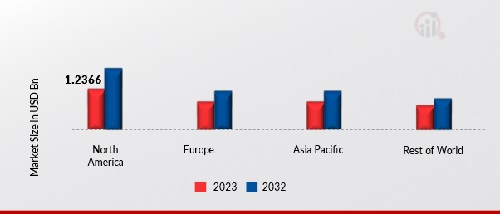Sustainable Construction Practices
The Global Rice Husk Ash Market Industry benefits from the increasing emphasis on sustainable construction practices. Rice husk ash, a byproduct of rice milling, is recognized for its pozzolanic properties, making it an ideal additive in cement and concrete production. This trend aligns with global efforts to reduce carbon emissions in the construction sector. As of 2024, the market is valued at approximately 2.83 USD Billion, reflecting a growing demand for eco-friendly materials. Countries like India and China are leading the way, incorporating rice husk ash into building materials, thus enhancing the industry's growth potential.
Regulatory Support for Waste Utilization
Regulatory support for the utilization of agricultural waste is a key driver for the Global Rice Husk Ash Market Industry. Governments worldwide are implementing policies that encourage the recycling and repurposing of agricultural byproducts, including rice husk ash. This regulatory framework not only promotes sustainability but also fosters economic growth within the agricultural sector. For instance, initiatives in countries like Indonesia and Vietnam are aimed at reducing waste and promoting the use of rice husk ash in construction. Such policies are likely to enhance the market's growth prospects, as they create a favorable environment for the adoption of rice husk ash in various applications.
Rising Awareness of Environmental Impact
Rising awareness of environmental impacts associated with construction materials is significantly influencing the Global Rice Husk Ash Market Industry. As stakeholders become more conscious of the ecological footprint of traditional materials, the demand for sustainable alternatives like rice husk ash is increasing. This awareness is particularly pronounced in urban areas where construction activities are prevalent. The market's growth is expected to be fueled by initiatives aimed at educating builders and consumers about the benefits of using rice husk ash. This shift towards environmentally friendly practices is anticipated to contribute to the industry's expansion, aligning with global sustainability goals.
Growing Demand for Green Building Materials
The Global Rice Husk Ash Market Industry is experiencing a surge in demand for green building materials, driven by environmental regulations and consumer preferences. Rice husk ash serves as a sustainable alternative to traditional materials, contributing to energy efficiency and reduced waste. The market is projected to reach 4.62 USD Billion by 2035, indicating a robust growth trajectory. This shift is particularly evident in regions such as North America and Europe, where green certifications are becoming essential for construction projects. The integration of rice husk ash into building practices not only supports sustainability but also enhances the overall performance of construction materials.
Technological Advancements in Ash Processing
Technological advancements in the processing of rice husk ash are propelling the Global Rice Husk Ash Market Industry forward. Innovations in ash activation and treatment methods enhance the material's properties, making it more effective in construction applications. These advancements facilitate the production of high-quality ash that meets international standards, thus expanding its market reach. As the industry evolves, it is likely that new processing technologies will emerge, further increasing the efficiency and effectiveness of rice husk ash. This trend aligns with the projected CAGR of 4.53% for the period from 2025 to 2035, indicating a promising future for the industry.














Leave a Comment